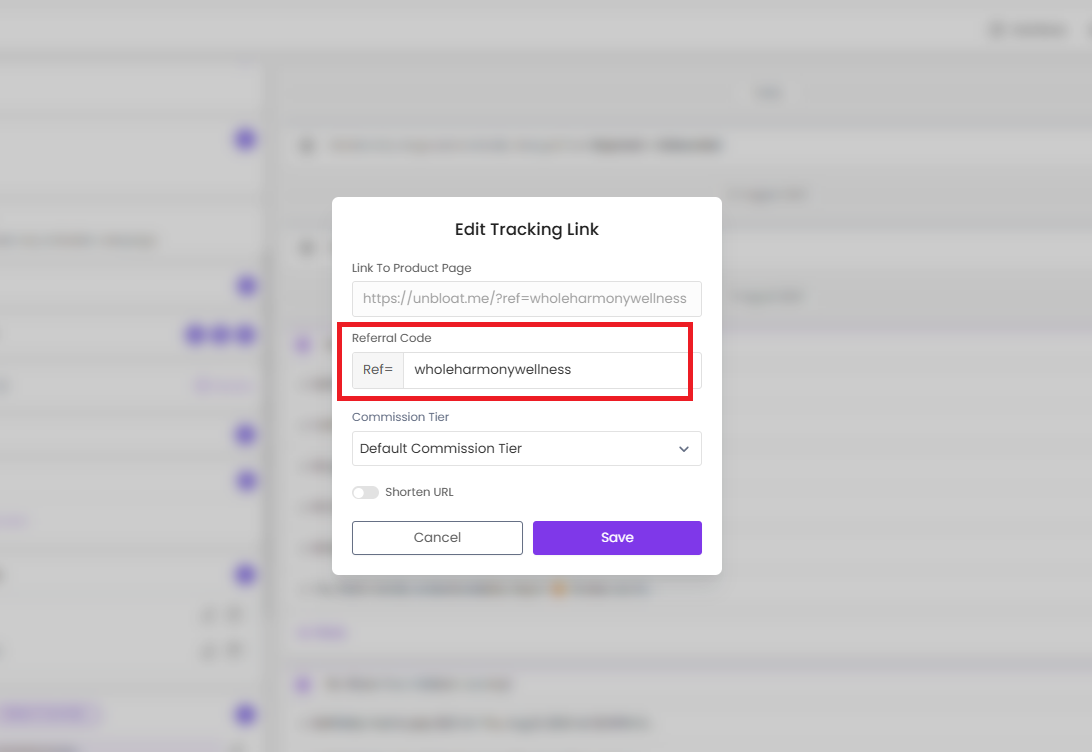If your SARAL dashboard shows unusually high sales from a newly onboarded influencer, that usually means their unique code or link is driving conversions.
But if the influencer hasn’t posted yet, it’s worth double-checking whether their code or link may have been leaked on public coupon sites.
If the influencer is still a good fit for your brand, you don’t need to remove them from your program. Instead:
Update their referral code to stop further unauthorized usage.
Notify the influencer to keep the relationship transparent and encourage responsible use.
You can say something like:
“Hey [Influencer Name], during a routine review, we noticed your discount code was shared on a public coupon site. We’ve refreshed your code and affiliate link to prevent further misuse. Just wanted to keep you in the loop!”
Being transparent helps preserve your working relationship and encourage influencers to keep their code usage within their audience.
Go to the influencer’s profile
Click Generate Affiliate Link
Select Edit Tracking Link
Update the Referral Code to a brand-new set of words (e.g., from “LILY10” to “LILYFITX”)
Click Save
This change will instantly deactivate the old referral code, making it unusable.

If you believe the leak was intentional or if the influencer no longer aligns with your brand:
Delete their SARAL profile: this disables their affiliate link and referral code, preventing further use.
Don’t worry, you won’t lose any historical data. All associated revenue and performance data will remain visible in your store’s reports.
You can take the following steps outside SARAL to confirm:
1— Check Referral History in GoAffPro
Even on the free plan, GoAffPro lets you see referral click and order history.
Go to GoAffPro > Affiliates > [Influencer Name] > Stats > Referrals
Review the referral clicks timeline:
Signs of Abuse:
Legit: Spikes in clicks followed by orders.
Suspicious: Many orders using the code but no corresponding clicks → this usually signals a leaked code.
2— Google the Code
Search the influencer’s code directly in Google to see if it appears on public coupon sites or deal sites.
3— Use Premium Leak Detection (GoAffPro Premium) in case you’re on premium plan, enable Coupon Code Leak Detection.
Note: This feature works only after activation. It doesn’t detect past leaks.
If you’ve confirmed suspicious activity, here are a few fair ways to handle pending commissions:
Edit the code immediately (invalidate the code and link).
Notify the influencer transparently about the issue.
Commission handling Options:
Offer a flat fee as a one-time goodwill payment for content already created.
Provide partial commission (e.g., 50%). A balanced approach if results were a mix of legit and leaked traffic.
Let’s be honest. Dealing with leaked discount codes is frustrating. If its happened once, it can easily happen again. And we know you don’t want to keep chasing down shady coupon sites or sorting through suspicious orders.
Here are two easy ways to protect your brand moving forward:
Use Dynamic Discount Codes:
These are random, auto generated and expirable codes tied to a link. Learn more here: How to Set Up Dynamic Discount Codes in SARAL
Integrate with Veeper:
SARAL supports integration with Veeper, a tool that helps block coupon abuse before it happens. Learn more here: How to Connect Veeper
Think of these tools as a security system for your discount codes and links — keeping them safe while protecting your revenue.
Still have questions?
Reach out anytime via the support chat at the bottom-right corner of your dashboard, or email us at support@getsaral.com. We’re happy to assist!